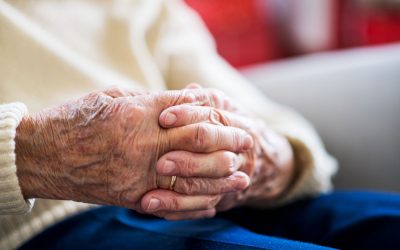Irish Times
When Caroline Costello went to see her doctor for a minor ailment, little did she know that she would be diagnosed with a serious illness, which, although treatable, would leave her with a life-long condition.
The 52-year-old was firstly diagnosed with skin cancer after casually mentioning a lump on her leg to her doctor and, although not entirely surprised by the revelation, she hadn’t realised that the ensuing treatment would be so tough.
“I visited my GP for an ear infection in April 2017 and as I was about to leave he asked was there anything else,” says the Cork woman. “I showed him two little pink lumps on each thigh [smaller than the nail on my little finger] which appeared over time – one was itchy and often causes a shooting pain. So he did a biopsy and two weeks later called me back and asked if I had health insurance.
“I knew then and there [that it was cancer] as I had googled pictures of similar-looking skin lesions so it wasn’t a great shock to hear that I tested positive for amelanotic nodular malignant melanoma, even though I had believed that melanoma was a mole that changed colour not a little pink lump which appeared out of nowhere. But this was the most aggressive and invasive form of skin cancer, measuring 3.8mm in depth and was a level four.”
Surgery
Caroline, who lives with her partner Paul and has a daughter Amy, was referred for an excision, followed by surgery to remove the lymph nodes – and although a scan revealed that the cancer hadn’t spread, the surgeon recommended the removal of all lymph nodes in the groin area as a precautionary measure, but warned that lymphoedema may be a possible side effect.
“I went home and researched lymphoedema and at the next appointment said I didn’t want surgery as I believed I might be at risk of developing it,” she says. “There is no cure and the cancer diagnosis was bad enough.
“But I was strongly advised that as my sentinel node had a very high mitotic rate, this was the safest option for a better survival outcome. I was told the scan doesn’t always pick up microscopic involvement so this was the next course of action.”
Caroline, who works in a software company, had a complete inguinal lymph node removal in June 2017, after which she had two suction drains in the inside of her thigh, one of which was still there when she was discharged five days later and would be removed when the “lymph fluid had reduced to an acceptable level”.
“I visited the dressing clinic regularly but couldn’t get the fluid to stop leaking,” she says. “I had a suction pump attached to the drain but even when my GP and health nurse tried, the lymph fluid was just flowing out of the wound from the first drain that had been removed before leaving the hospital.
“I started to feel unwell and although I thought I was just tired, within an hour I couldn’t move and the pain in my leg, which had now ballooned to twice the size of the other leg, was excruciating so my friend called an ambulance and when it arrived the crew spent 45 minutes stabilising me and managing pain relief before they could transport me to hospital – they said I could have developed sepsis or gone into toxic shock within a matter of hours.”
Caroline was told she had cellulitis (a bacterial infection of the deep layers of the skin) and had to undergo a procedure to drain the fluid which was “burning the skin surrounding the drain”.
Fluid build-up
“They had to insert a very long needle to drain the fluid build-up and insert new drains,” she says. “The relief was immediate and I cried and thanked the staff. And while I was in hospital, I was informed by my consultant that results from the node dissection showed cancer involvement so I can thank him for insisting on removing of them after the Pet/CT came back negative.”
When she was finally discharged, after several complications, Caroline was told she had developed lymphoedema. She was referred to an occupational therapist, put on a waiting list for MLD (manual lymphatic drainage) massage and measured for a leg support.
“I couldn’t believe that this was the way my life now was and found it hard to accept that I would walk with a limp and drag this heavy hot leg around with me,” she says. “The waiting list for MLD was so long that I found one privately who told me that constant massage, compression and bandaging was the only way to keep the lymphoedema from progressing – I was devastated and felt worse than the day I was diagnosed with malignant melanoma.
“I went [to the private therapist] as often as I could afford as I had no other choice – if I had waited for the 12/18 months on the [public] waiting list I honestly don’t think I could have coped with the pain. It’s a disgrace that there are no funds for public services across the country for MLD.”
Since developing the condition, the mother of one suffered with a lot of pain – so decided to look into alternative remedies.
“So many things affected my leg including heat, sitting for long periods and walking for long periods as my thigh area has a lot of nerve damage and felt like a boiling kettle,” she says. “Driving is also practically impossible and on some days the pain was so bad, that I wanted to chop my leg off. It was hard not to feel depressed and very difficult to accept that this was it.
“During the summer heatwave, work became very difficult. I began researching alternative treatments and visited the hydrotherapy salt water pool at Inchydoney and was amazed the next morning to find I had an almost normal-looking leg again. This lasted for about four days so I started looking into alternatives closer to home and discovered that The Radisson Hotel in Little Island has a hydrotherapy pool with jets. It had chlorinated water but I decided it was worth a try and went all summer and into the winter and found coupled with a few MLD sessions it helped a lot – but still not an acceptable fix long term.”
Refusing to accept that this would be her lot for life, Caroline spoke to her consultant who mentioned the possibility of receiving lymphaticovenular anastomosis in the United Kingdom which would hopefully alter some of the effects of the condition and reduce pain and tightness in her leg.
€18,500 surgery
Initial tests showed that she was “an ideal candidate” for LVA surgery which would cost about €18,500. However her insurance company refused to pay for the treatment on the grounds that it was not a “medical proven treatment”. And while she is currently awaiting the result of an appeal, she self-funded the cost of the procedure and travelled to the UK earlier this year to undergo the procedure and is cautiously optimistic about the future.
“I had it done 2½ months ago and it can take a year to see the full benefit, but my thigh has gone down already and the boiling kettle pain disappeared the morning after the surgery and hasn’t come back since,” she says. “I’m hopeful but also realistic in my expectations but it does feel like my leg again and I haven’t thought about cutting it off since.
“I still wear my compression garment, visit the pool and do the odd MLD session. And I will need six monthly CT scans for melanoma surveillance for the next three years. But I am hopeful and [cancer] survival rates are increasing all the time and that had a lot to do with me wanting a better quality of life for myself.
“I am not an affluent person – but I wasn’t willing to let my condition deteriorate any further and my family couldn’t bear to see me in pain. However, I do feel let down by the lack of services and awareness in this country.”

Latest news
Furniss Group | Genetics and Epidemiology of Common Hand Conditions
The work of our group strives to understand the genetic and non-genetic factors that predispose people to common hand conditions, in particular Dupuytren’s Disease and Carpal Tunnel Syndrome, with the aim of developing better treatments in the future.
New life thanks to super microsurgery
Businessman could barely move after insect bite years ago…
Fluorescent fluid helps to spot signs of lymphoedema
How green dye can stop the misery of puffy arms and legs: Fluorescent fluid helps to spot signs of lymphoedema.
Surgery address:
Nuffield Health, The Manor Hospital, Beech Road, Oxford, OX3 7RP
Oxford Lymphoedema Practice, PO Box 1138, Oxford, OX1 9UN
© Oxford Lymphoedema Practice Ltd 2018


